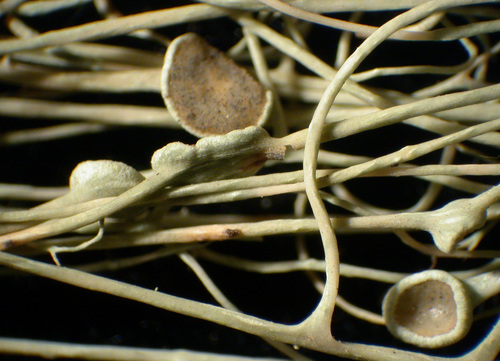Click on Characteristic name for explanation. Click on image for larger version.
|
Alectoria vancouverensis
| Overview
| | PNW Range: | | | West side | Occasional
| | East side | None
| | Immediate coast | Occasional
| | Alpine or subalpine | None
| | Habitat: | Most common in the transition between valley forests and mountain forests (generally below about 700 m); often occurring in the same stands as A. sarmentosa, but usually dropping out below the elevation of highest dominance by Alectoria; more common on the immediate coast than A. sarmentosa.
| | Substrate: | Bark and wood.
| | Comments: |
| | Synonymy: | none
|
|

Apothecia
by B. McCune
2/4
Scale: Bar=1mm unless noted
|
|
|
|
|